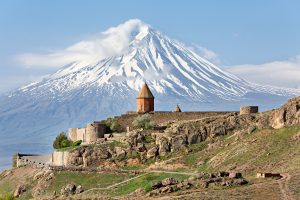
Armenians, who were the first to adopt Christianity as the state religion (in 301, 79 years before Rome), are one of the oldest nations of Western Asia; over the centuries, they have created a unique civilization with inherent culture, architecture, traditions, and lifestyle.
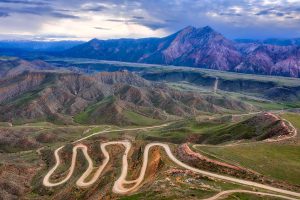
Armenia borders with Georgia in the north, Azerbaijan in the east, Iran in the south, and Turkey in the west. The area of the country is small, just 29743 sq. km. The state language is Armenian. 98.1% of the population of Armenia are Armenians, 1.2% are Yezidis, 0.4% are Russians, 0.3% are Greeks and Assyrians.

Armenia is a sunny country. There are four seasons: warm and rainy spring, hot summer, golden autumn, and sunny winter. There is no sea in Armenia, but Lake Sevan is the second-highest freshwater lake in the world after Lake Titicaca in South America. Out of the 530 European bird species, 345 live in Armenia. Also, Armenia is home to 339 endemic animals.

Armenia is often referred to as the land of churches. You can also discover ancient cities, impregnable fortresses, and prehistoric megalithic structures such as Karahunj, an ancient observatory. In mountainous Armenia, you will find ancient abandoned settlements, one of which is the village of Hin Khot, called the Armenian “Machu Picchu.”

Archaeologists in Armenia discovered the oldest leather shoes in the world. Its age is more than 5500 years.
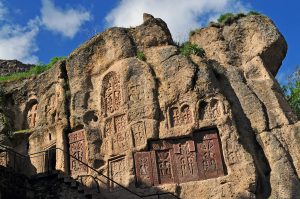 Besides churches and monasteries with unique architecture, you can see more than 50,000 handmade khachkars in Armenia, mostly made of volcanic basalt or tuff. The symbol of the Sun (Eternity) is usually engraved on the lower part of the khachkars, in the center of which there is a cross, a symbol of the crucifixion of Christ. The Armenian khachkar is included in the UNESCO list of intangible heritage of mankind.
Besides churches and monasteries with unique architecture, you can see more than 50,000 handmade khachkars in Armenia, mostly made of volcanic basalt or tuff. The symbol of the Sun (Eternity) is usually engraved on the lower part of the khachkars, in the center of which there is a cross, a symbol of the crucifixion of Christ. The Armenian khachkar is included in the UNESCO list of intangible heritage of mankind.
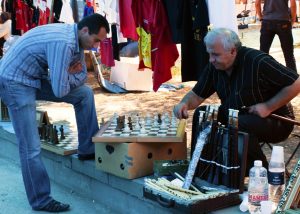
Armenia is a chess-playing country. Chess has been played here since the Middle Ages, and now chess is taught as a compulsory subject in comprehensive schools. Armenia is also among the world leaders in terms of the number of grandmasters per capita.

The Geghard monastery is also included in UNESCO`s list of material cultural heritage. Starting from the middle of the 13th century, the iron spearhead (Lance of Destiny), which is alleged to have pierced the side of Jesus, has been kept in this monastery. According to legend, the Apostle Thaddeus brought it to Armenia. The list also includes the monastery complex of Haghpat and the Cathedral of Etchmiadzin, the spiritual capital of Armenia, the first Christian church in the world (4th century).
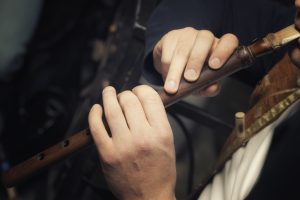
The list of intangible heritage of UNESCO includes the duduk- a musical instrument made of apricot wood. Armenia is a country of apricots, and this fruit is often called the “Armenian apple.”

The Tatev ropeway in the Tatev monastery complex is listed in the Guinness Book of Records as the longest in the world (5752 m).

Armenia is known for its drinking fountains (pulpulaks). These are memorial stone springs, which are commonly found in the streets of cities. Passers-by may quench their thirst with spring water from these pulpulaks.

The capital of Armenia is Yerevan. It was founded in 782 BC. and is 29 years older than Rome. Yerevan is home to Matenadaran, one of the world’s most significant ancient manuscripts and medieval book repositories.

Armenian cuisine is considered one of the oldest in Asia. The wide use of various edible herbs characterizes it. Armenia is a hospitable country, and Armenians are friendly and positive people.
Discover Armenia!
Visit Armenia!